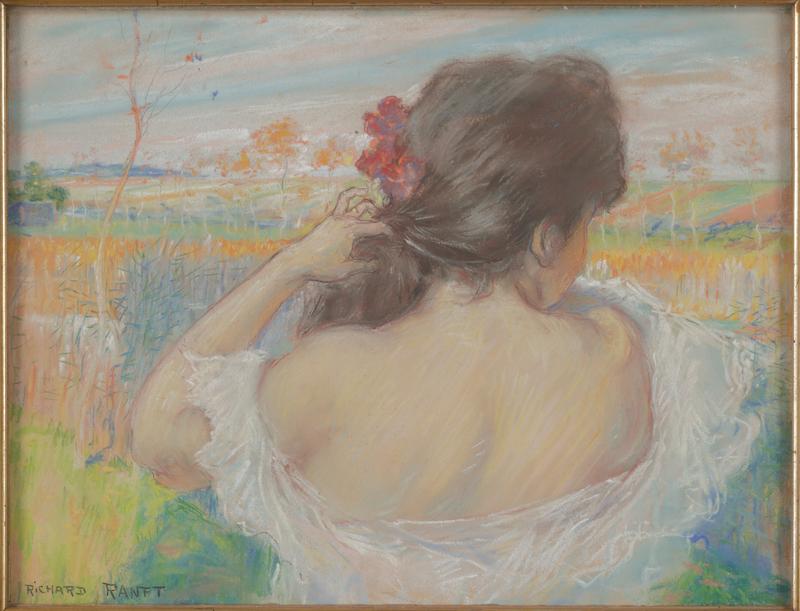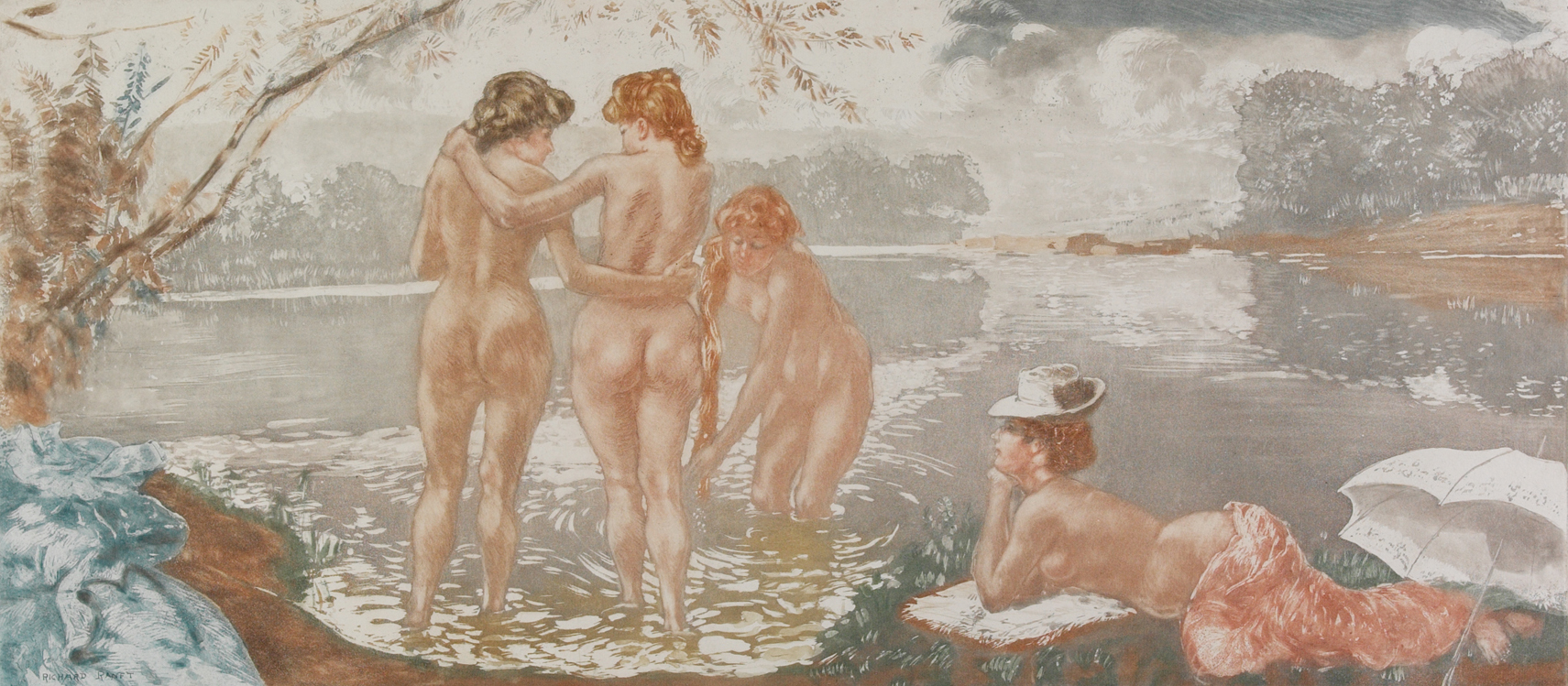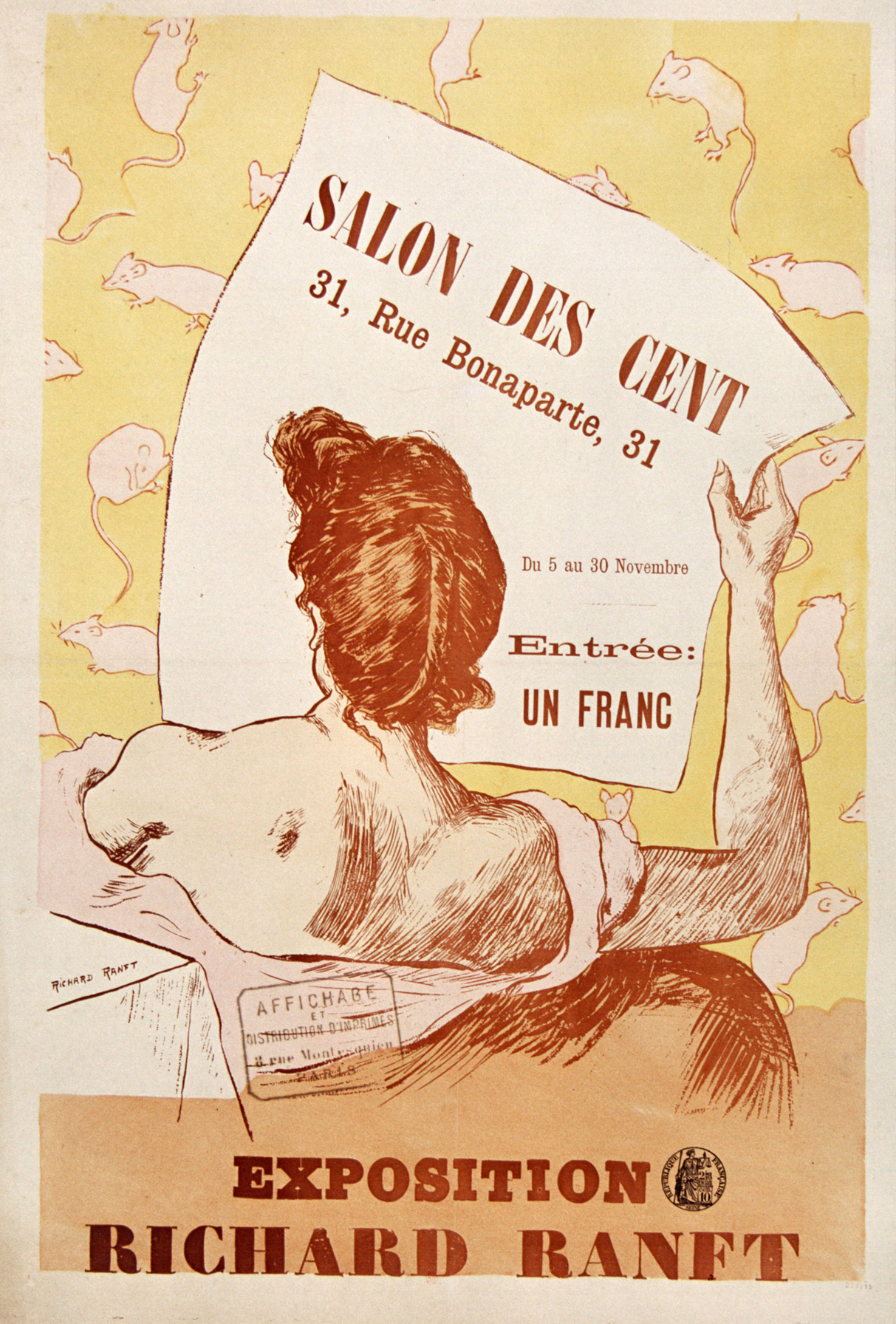
160. Richard Ranft, Bust of a Woman Seen from the Back in a Landscape
| Artist | Richard Ranft, Swiss (active France), Plainpalais, Geneva 1862–Chantilly 1931 |
| Title, Date | Bust of a Woman Seen from the Back in a Landscape, mid-1890s |
| Medium | Pastel |
| Dimensions | 9 1/2 × 12 1/2 in. (24.1 × 31.8 cm) |
| Inscriptions + Marks | Lower left: RICHARD RANFT |
| Provenance | [Christine Bethenod, Paris, until 2016; to Weisberg]; Yvonne and Gabriel Weisberg, Minneapolis |
| Exhibition History | "Reflections on Reality: Drawings and Paintings from the Weisberg Collection," Mia, 2022–23 |
| Credit Line | Promised gift of Gabriel P. and Yvonne M.L. Weisberg, Minneapolis |
Like other nineteenth-century Swiss artists—Louise Catherine Breslau, Théophile Alexandre Steinlen, Eugène Grasset, and Félix Vallotton—Richard Ranft began his training in his home country but continued it in France. He remained there for the rest of his career. Once in Paris, the young Ranft took a job as a bank clerk to support himself. Meanwhile, he worked with Gustave Courbet and the sculptor Augustin-Alexandre Dumont, who taught him engraving. That is the medium that made Ranft a success, but he is also notable for his explorations into color etching.


For Ranft, the 1890s, the decade in which he completed this pastel, was an extremely productive time. The many prints and pastels he made then and in the early 1900s chronicle the pleasures of the era, with women often taking center stage. He depicted women at salons, the circus, costume balls, racetracks, cabarets, the shore (fig. 1). He also used women as icons to advance a symbolist aesthetic. Ranft’s images proved so popular that a large-scale exhibition of his work was held in 1894 at the newly launched Salon des Cent (Salon of the One Hundred) in Paris.1 His exhibition poster (fig. 2)2 shows a woman from the back in an off-the-shoulder garment and with a raised arm, just like the figure in this pastel.
GPW
Notes
For a critique of the 1894 exhibition by French symbolist poet Gustave Kahn (1859–1936), see Le Mercure de France, no. 803 (December 1931), pp. 455–56. ↩︎
A proof with just linear elements of the woman is at the Centre National du Graphisme, Chaumont, France (inv. A1611), https://www.centrenationaldugraphisme.fr/le-signe/collection/salon-des-cent-expositionrichard-ranft ↩︎